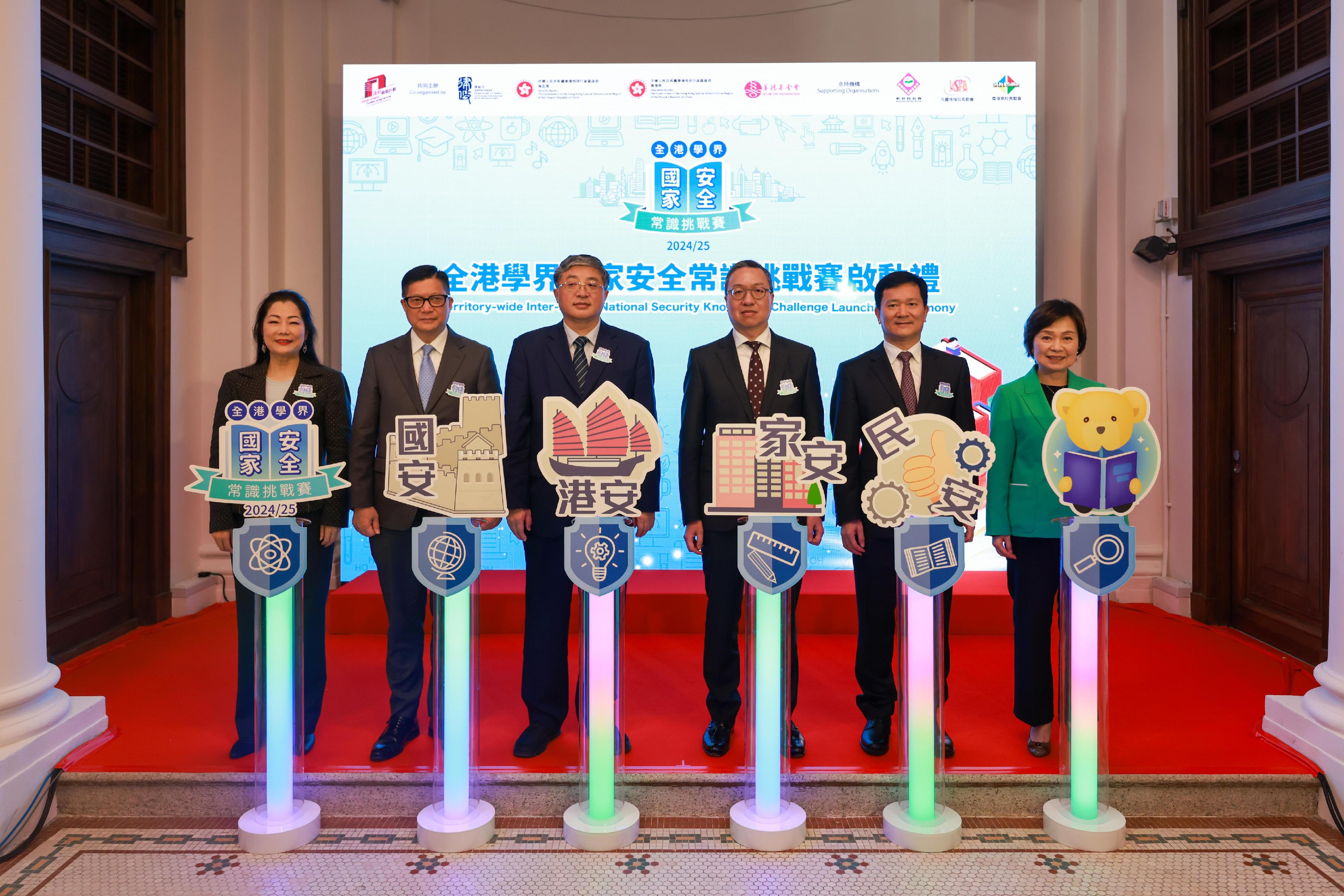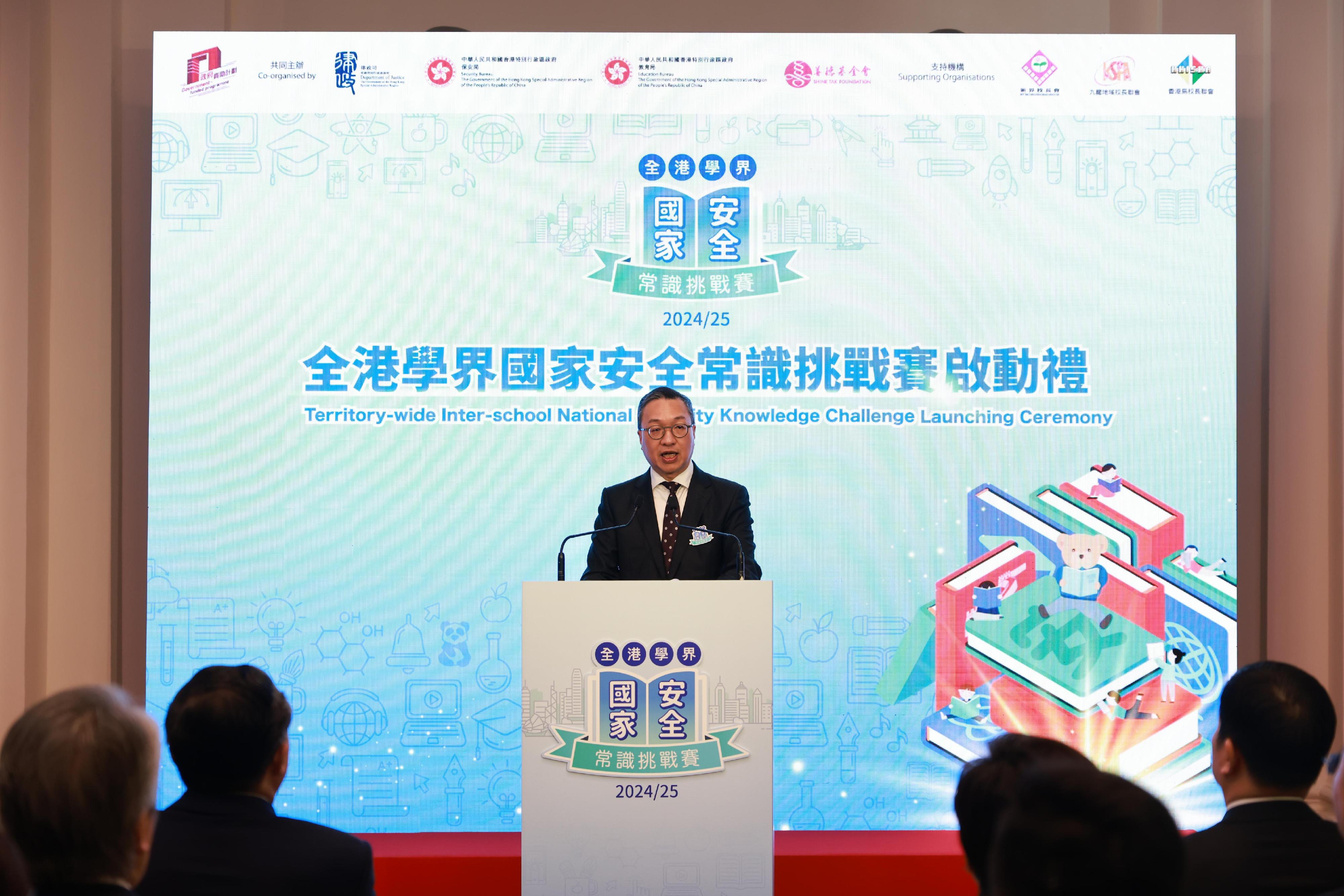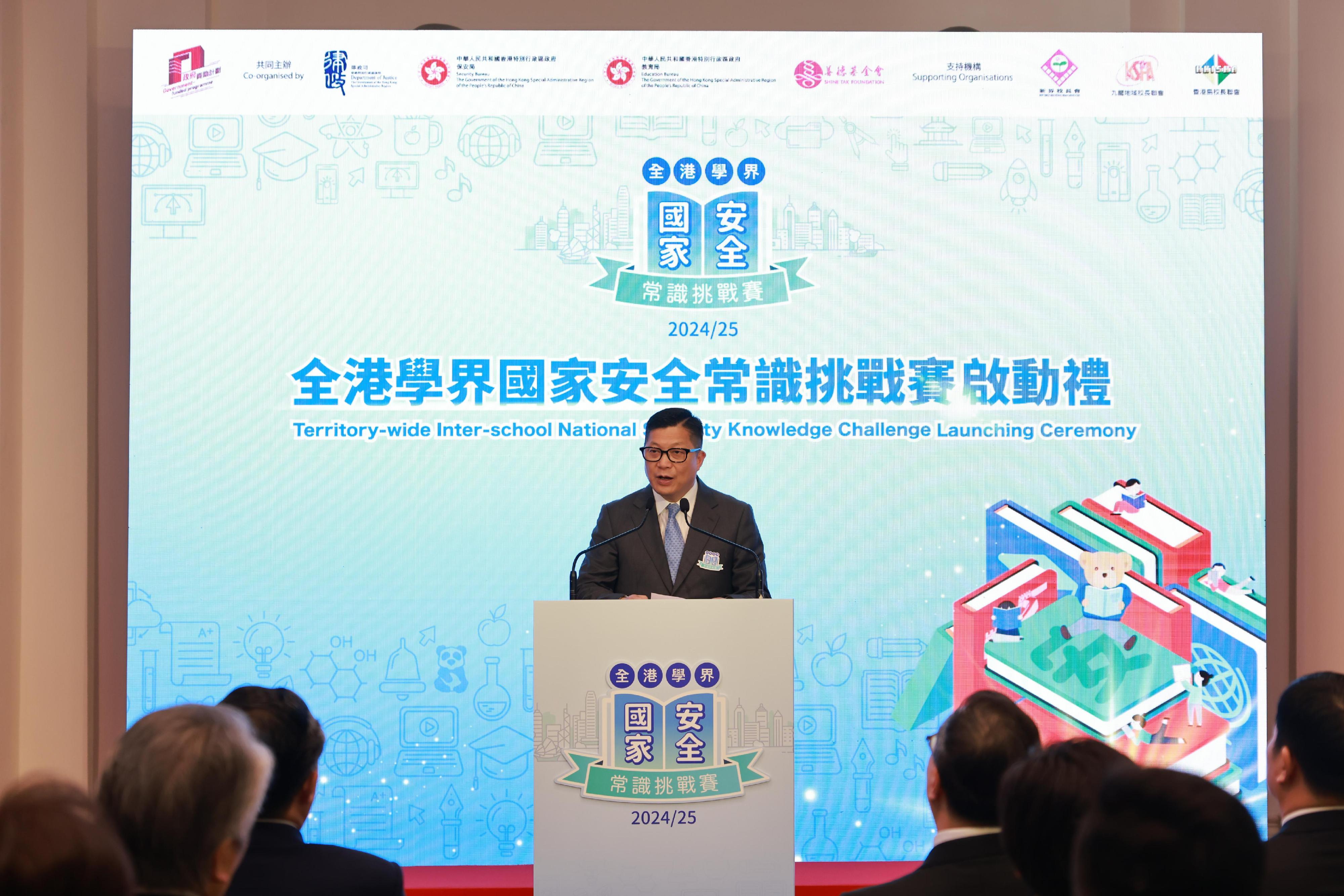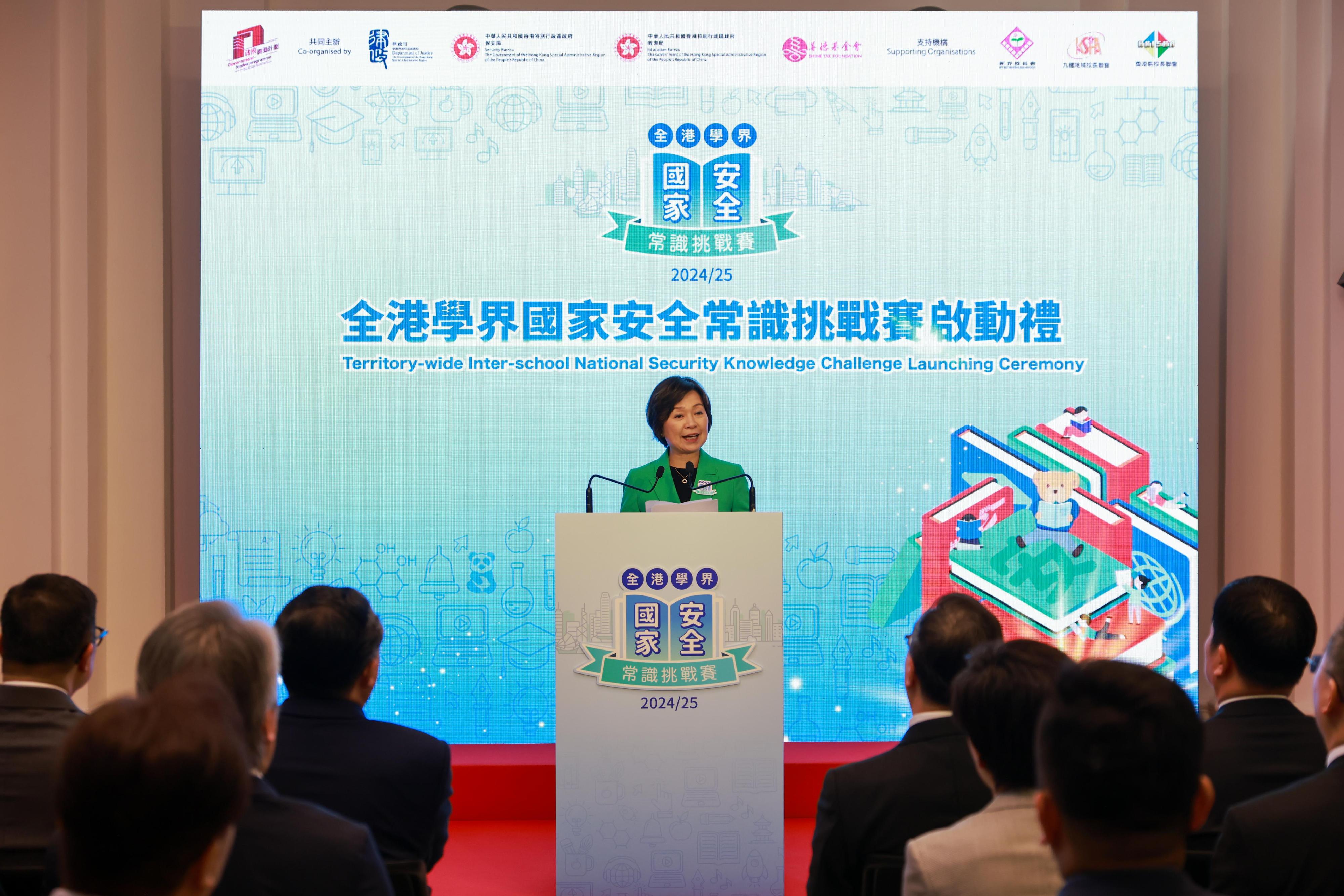Launching ceremony of Territory-wide Inter-school National Security Knowledge Challenge 2024/25 held today (with photos)
To enhance students’ understanding of the Constitution, the Basic Law, the Hong Kong National Security Law (NSL) and the Safeguarding National Security Ordinance (SNSO), as well as other relevant aspects of national security, the Department of Justice (DoJ), the Security Bureau (SB), the Education Bureau (EDB) and the Hong Kong Shine Tak Foundation have once again jointly organised the Territory-wide Inter-school National Security Knowledge Challenge this academic year. A launching ceremony was held today (December 4), Constitution Day, while the finals will be held on April 15, National Security Education Day, next year, with a view to further promoting messages of national security to achieve a broader and deeper coverage.
The Chief Executive, Mr John Lee, said in a video speech that with the completion of the local legislation for Article 23 of the Basic Law, the newly enacted SNSO has achieved compatibility and complementarity with the NSL, together forming a comprehensive legal system and enforcement mechanism for safeguarding national security. He expressed his expectation that through participating in the Challenge, students could gain a deeper and correct understanding of the Constitution and the Basic Law and strengthen their knowledge of the holistic view of national security, the NSL and the SNSO, thereby enhancing their awareness of upholding civic responsibility and obligation in safeguarding national security.
Officiating at the ceremony, the Secretary for Justice, Mr Paul Lam, SC, said that safeguarding national security is a legal responsibility and that it is the duty of all Hong Kong citizens to respect and abide by national security laws. He said he is glad to see that young and energetic students are eager to pursue knowledge of national security and hopes they can stay enthusiastic, keep learning and contribute their efforts to building a safe and stable city. The DoJ will continue supporting the rule of law education to rally efforts to safeguard national security.
Also officiating at the ceremony, the Secretary for Security, Mr Tang Ping-keung, said that the Security Bureau attaches great importance to national security education for young people. New elements have been included in this year’s Challenge, such as expanding the knowledge content to cover the SNSO, setting up an English section for non-Chinese speaking secondary school students for the first time, and arranging for final competitions to be held at a shopping mall to bring the message of national security to the community. In the coming year, the Security Bureau will continue to enhance publicity and promotion of national security education to cultivate the concept of “security brings prosperity” in the community.
Addressing the ceremony, the Secretary for Education, Dr Choi Yuk-lin, said she believes that the competition could enhance students’ understanding of the rule of law and national affairs as well as their awareness and sense of responsibility in safeguarding national security while reinforcing their sense of patriotism, belonging to and pride towards the country. She also expressed her gratitude to the schools for their active support for students to participate in the competition, showing the importance the schools have attached to the promotion of national security education.
The Challenge is conducted in the form of a quiz. In addition to primary school and secondary school sections, an English section was set up for the first time for non-Chinese speaking secondary school students. The Challenge has attracted a total of more than 126 000 primary and secondary students from 610 schools to participate in the competitions – an increase of over 20 per cent in participants compared to last year. After fierce competitions, nine schools advanced to the finals. They will compete for the crown on National Security Education Day on April 15 next year.
Highlights of the launching ceremony and the Challenge will be broadcast at 10.30pm on Sundays starting from December 8 until April 20 next year on the programme “Our Home Our Country” on HOY Infotainment. The programme also includes a series of national security animations featuring “Andy and Security Bear” produced by the Security Bureau, along with other national security knowledge presented by “Andy and Security Bear” to deepen public understanding of national security concepts.






